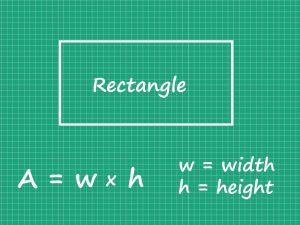Introduction
Applications of Congruent Triangles
Example 1: In the given figure, AB = BC and AD = CD. Show that BD bisects AC at right angles.

Solution:
From the given figure, ∆ABD ≅ ∆CBD
Given: AB = BC and AD = CD
To prove: ∠BEA = ∠BEC = 90° and AE = EC.
Proof:

Now, from ∆ABE and ∆CBE,

Example 2: In a Δ ABC, if AB = AC and ∠ B = 70°, find ∠ A.
Solution:
Given: AB = AC and ∠B = 70°
∠ B = ∠ C [Angles opposite to equal sides are equal]
Therefore, ∠ B = ∠ C = 70°
Sum of angles in a triangle = 180°
∠ A + ∠ B + ∠ C = 180°

Example 3: In the given figure, PQ = PS and ∠QPR = ∠SPR. Prove that ∆ PQR ≅ ∆PSR, Use SAS congruence postulate.

Solution:

Example 4: Identify the congruent triangle in the given figure.

Solution:

Example 5:
Write a 2-column proof for the given figure.

Given: BD is an angle bisector of ∠CDA, ∠C ≅ ∠A
To prove: △CBD ≅ ∠ABD
Solution:

How to prove construction:
The following steps explain the construction of congruent triangles:
Step 1:
To copy∠ A, draw a segment with initial point D. Draw an arc with center A. Using the same radius, draw an arc with center D. Label points B, C, and E.


Step 2:
Draw an arc with radius BC and center E. Label the intersection F.


Step 3:
Draw DF
.


Example 6:
Write a proof to verify that the construction for copying an angle is valid.
Solution:

To prove: ![]()

Plan for Proof:
Show that △CAB ≅ △FDE, so we can conclude that the corresponding parts ∠A and ∠D are congruent.
Plan in action:

Exercise
- Write a plan for proof for the given information to prove that ∠1 ≅ ∠2.

- Prove that ∠VYX ≅ ∠WYZ in the given figure.

- Prove that¯FL≅¯HN in the given diagram.

- Prove that¯FL≅¯HN in the given diagram.

- Prove that ¯AC≅¯GE in the given diagram.

- Write a two-column proof from the given diagram.

- Prove that ∠1 ≅ ∠2 from the given diagram with the given information.
Given: ¯MN≅¯KN,∠PMN≅∠NKL

- Prove that ∠1 ≅ ∠2 from the given diagram with the given information.
Given: TS≅¯TV,¯SR≅¯VW

- Find the measure of each angle in the given triangle.

m∠A=x°;m∠B=(4x)° and m∠C=(5x)°.
- Find the measure of each angle in the given triangle.

m∠A=x°;m∠B=(5x)° and m∠C=(x+19)°.
What have we learned
- Understand and apply SSS congruence postulate.
- Understand and apply SAS congruence postulate.
- Understand and apply AAS congruence postulate.
- Understand and apply construction proof.
- Solve problems on different congruence of triangles.
- Solve problems on different congruence postulates.
Concept Map


Related topics
Addition and Multiplication Using Counters & Bar-Diagrams
Introduction: We can find the solution to the word problem by solving it. Here, in this topic, we can use 3 methods to find the solution. 1. Add using counters 2. Use factors to get the product 3. Write equations to find the unknown. Addition Equation: 8+8+8 =? Multiplication equation: 3×8=? Example 1: Andrew has […]
Read More >>Dilation: Definitions, Characteristics, and Similarities
Understanding Dilation A dilation is a transformation that produces an image that is of the same shape and different sizes. Dilation that creates a larger image is called enlargement. Describing Dilation Dilation of Scale Factor 2 The following figure undergoes a dilation with a scale factor of 2 giving an image A’ (2, 4), B’ […]
Read More >>How to Write and Interpret Numerical Expressions?
Write numerical expressions What is the Meaning of Numerical Expression? A numerical expression is a combination of numbers and integers using basic operations such as addition, subtraction, multiplication, or division. The word PEMDAS stands for: P → Parentheses E → Exponents M → Multiplication D → Division A → Addition S → Subtraction Some examples […]
Read More >>System of Linear Inequalities and Equations
Introduction: Systems of Linear Inequalities: A system of linear inequalities is a set of two or more linear inequalities in the same variables. The following example illustrates this, y < x + 2…………..Inequality 1 y ≥ 2x − 1…………Inequality 2 Solution of a System of Linear Inequalities: A solution of a system of linear inequalities […]
Read More >>Other topics











Comments: